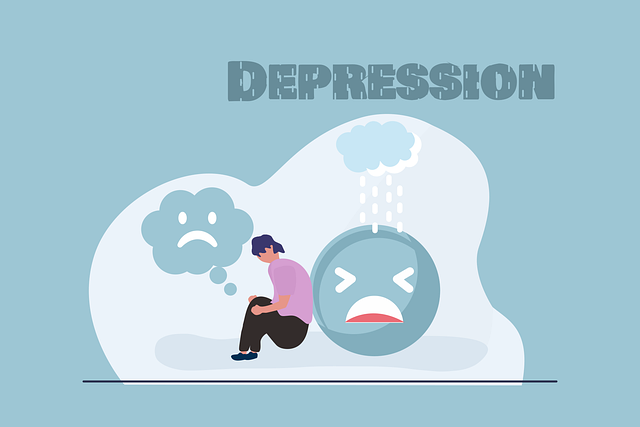Englewood Autism Spectrum Disorder (ASD) therapy prioritizes a comprehensive, multi-faceted approach to risk assessment and harm minimization. This involves analyzing behavioral patterns, sensory sensitivities, communication methods, and environmental triggers, while integrating Emotional Intelligence and Inner Strength Development. The holistic strategy considers both external risks and internal emotional states for clients on the autism spectrum. Tailored interventions include structured routines, visual aids, positive reinforcement, social skills training, mindfulness meditation, and depression prevention to enhance well-being and promote resilience in diverse settings. Evidence-based practices, cultural sensitivity, burnout prevention, and mental health policy advocacy ensure a safe, supportive environment for effective treatment. Continuous evaluation and adjustments ensure optimal outcomes for clients with ASD.
Englewood Autism Spectrum Disorder (ASD) therapy requires a nuanced approach centered on comprehensive risk assessment and harm minimization. This article guides professionals through essential steps, from understanding ASD-specific risks to developing and implementing adaptive strategies for safe, supportive environments. We explore identifying potential harms and triggers in therapy settings, crafting minimization plans, and continuously evaluating for optimal client outcomes. By integrating these practices, Englewood ASD therapy can enhance safety and foster positive growth.
- Understanding Risk Assessment for Individuals with Autism Spectrum Disorder (ASD)
- Identifying Potential Harms and Triggers in Therapy Settings
- Developing a Comprehensive Minimization Plan
- Implementing Strategies for Safe and Supportive Therapy Environments
- Continuous Evaluation and Adaptation for Optimal Client Outcomes
Understanding Risk Assessment for Individuals with Autism Spectrum Disorder (ASD)

Understanding Risk Assessment for Individuals with Autism Spectrum Disorder (ASD) is a critical step in implementing effective harm minimization strategies. Englewood Autism Spectrum Disorder Therapy focuses on comprehensive risk assessment, recognizing that each individual with ASD has unique strengths and challenges. This approach involves careful analysis of behavioral patterns, sensory sensitivities, communication methods, and environmental triggers that could potentially lead to harmful situations.
By integrating concepts like Emotional Intelligence and Inner Strength Development, trauma support services are tailored to address specific needs. The process considers both external risks in the environment and internal emotional states, ensuring a holistic view of an individual’s well-being. This individualized approach is essential for creating safe spaces and promoting positive outcomes for those on the autism spectrum.
Identifying Potential Harms and Triggers in Therapy Settings

In therapy settings, especially those catering to individuals with Englewood Autism Spectrum Disorder (ASD), identifying potential harms and triggers is a critical step in risk assessment and harm minimization planning. Therapists must consider various factors unique to ASD, such as sensory sensitivities, communication differences, and specific interests or obsessions. For instance, certain sights, sounds, or textures might trigger intense emotional responses in clients with ASD. Understanding these individual differences ensures tailored interventions and creates a safe environment.
Emotional regulation is a key area of focus during this process. Many individuals with ASD may struggle with managing their emotions, and triggers can often escalate these challenges. Therefore, therapists should integrate strategies like mindfulness meditation and mental wellness coaching programs into treatment plans. These techniques promote emotional awareness and provide tools for coping with distressing triggers, ultimately enhancing overall mental wellness.
Developing a Comprehensive Minimization Plan

In developing a comprehensive harm minimization plan for individuals with Englewood Autism Spectrum Disorder (ASD) Therapy, a multifaceted approach is essential. This involves identifying potential risks and hazards within various environments—from homes to schools—and implementing strategies to mitigate them. For instance, tailored interventions can focus on sensory sensitivities, social interactions, and emotional regulation, leveraging techniques such as structured routines, visual aids, and positive reinforcement.
The plan should encompass not only the prevention of negative outcomes but also the promotion of well-being. Integrating practices like Social Skills Training, Mindfulness Meditation, and Depression Prevention can empower individuals with ASD to navigate social challenges, manage stress, and cultivate resilience. By fostering self-awareness and coping mechanisms, these strategies contribute to a more inclusive and supportive environment, enhancing overall quality of life for those navigating the complexities of autism spectrum disorders.
Implementing Strategies for Safe and Supportive Therapy Environments

Creating safe and supportive therapy environments is paramount when treating individuals with Englewood Autism Spectrum Disorder (ASD). This involves implementing evidence-based strategies that cater to their unique needs, ensuring a welcoming atmosphere where they can thrive. One key approach is adopting Cultural Sensitivity in Mental Healthcare Practice, recognizing and respecting diverse cultural backgrounds, beliefs, and communication styles. This fosters trust and encourages open expression, which is essential for effective therapy.
Additionally, burnout prevention plays a vital role in maintaining a healthy therapeutic space. Supportive supervision, regular staff training, and clear policy guidelines on boundaries and self-care can mitigate risks of burnout among therapists. Mental Health Policy Analysis and Advocacy also contributes to this by ensuring resources and practices are in place to uphold ethical standards and promote positive outcomes for individuals with ASD.
Continuous Evaluation and Adaptation for Optimal Client Outcomes

Englewood Autism Spectrum Disorder Therapy (ASD) practices must embrace continuous evaluation and adaptation to ensure optimal client outcomes. This dynamic approach involves regularly assessing the effectiveness of intervention strategies, adjusting plans based on individual progress, and incorporating new research and best practices. By doing so, therapists can tailor their methods to meet the unique needs of each client with ASD, fostering greater independence, communication skills, and overall well-being.
Emotional Regulation, Compassion Cultivation Practices, and Burnout Prevention are integral aspects of this continuous cycle. Regularly gauging clients’ emotional states helps therapists identify triggers and develop coping mechanisms. Cultivating compassion allows for a more empathetic and supportive therapeutic environment, while burnout prevention strategies ensure therapists can sustain their own well-being, thereby enhancing the overall quality of care provided to Englewood ASD clients.
Risk assessment and harm minimization planning are essential components of providing safe and supportive therapy environments for individuals with Autism Spectrum Disorder (ASD). By understanding the unique needs and potential triggers of each client, therapists at Englewood Autism Spectrum Disorder Therapy can develop comprehensive minimization plans. Continuous evaluation and adaptation of these strategies ensure optimal outcomes, fostering a tapestry of positive experiences for folks navigating the complexities of ASD. This proactive approach revolutionizes therapy, enabling professionals to create a labyrinth of support that enhances and emphasizes each individual’s unique journey.














